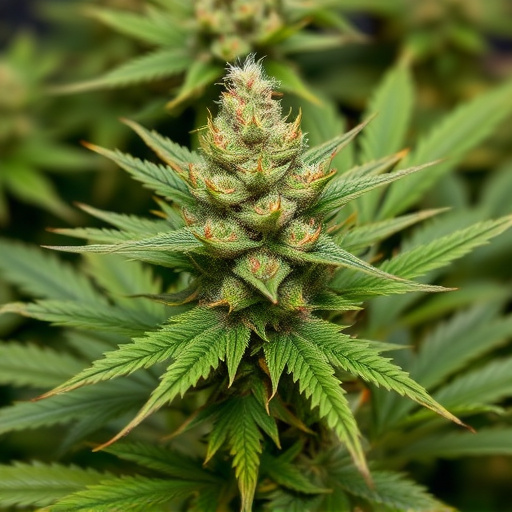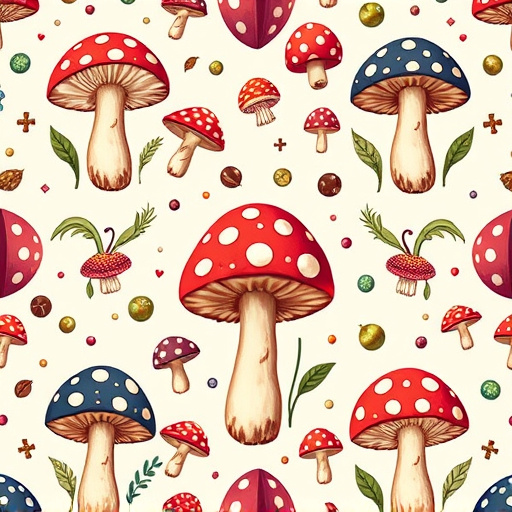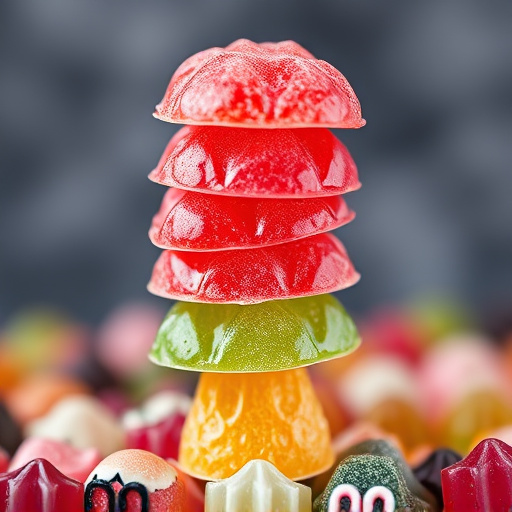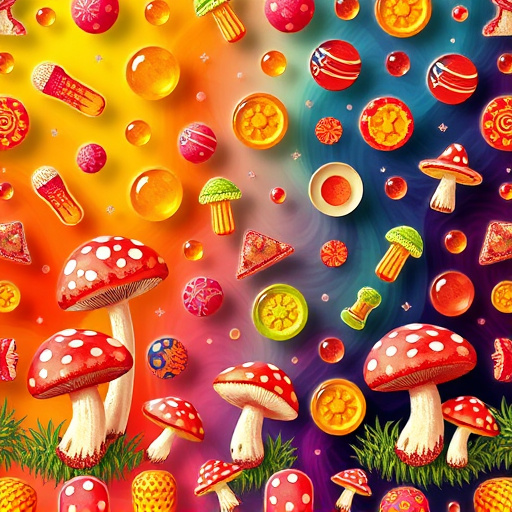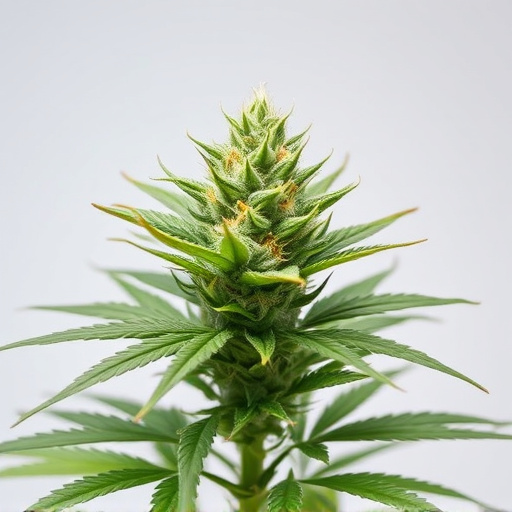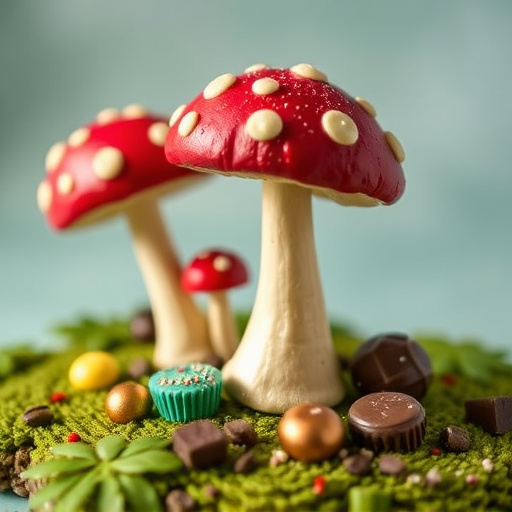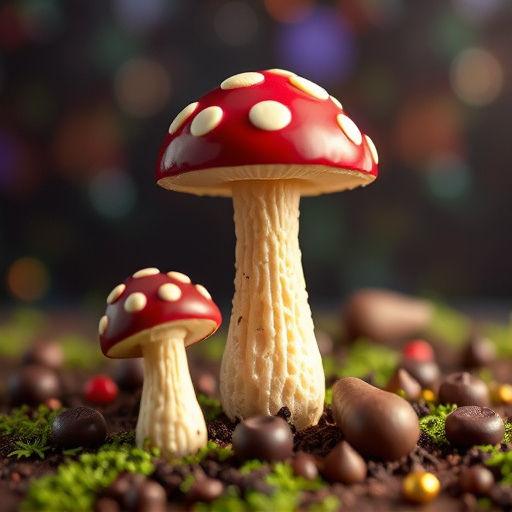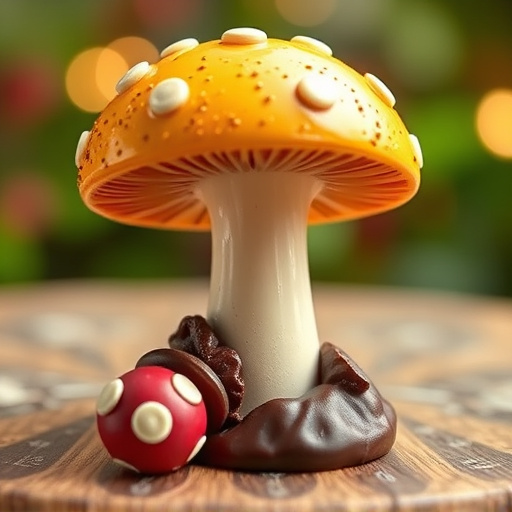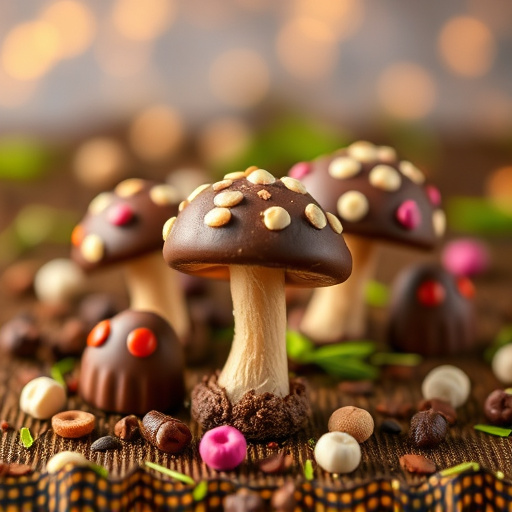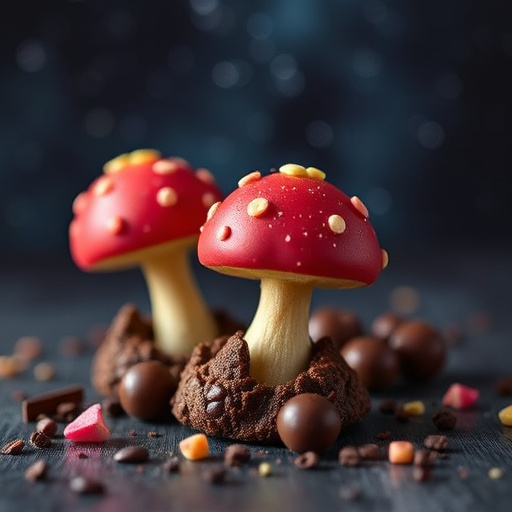"The Science Behind Magic Mushroom Chocolates" investigates the potential of incorporating psilocybin and psilocin, active compounds in magic mushrooms, into edible forms like chocolate. This approach offers a subtler and more controlled dose for various applications: mental focus, creativity boosts, or therapeutic benefits under professional supervision. By infusing chocolate with these compounds, consumers can experience their effects without traditional methods, opening intriguing possibilities for recreational and therapeutic use in the realm of psychedelic research.
“Unveiling the potential of magic mushroom chocolates for enhanced focus: a modern approach to cognitive enhancement. This article delves into the science behind these unique treats, exploring the active compounds psilocybin and psilocin and their interaction with brain serotonin receptors. We examine recent studies highlighting the benefits of psilocybin on focus, attention span, and cognitive flexibility. Additionally, we provide insights into safety considerations, including dose, potential risks, and regulatory aspects, offering a balanced perspective on this fascinating topic.”
- The Compounds: Unveiling the Active Ingredients in Magic Mushrooms
- – Exploring psilocybin and psilocin: Their role and effects on the brain
- – How these compounds interact with serotonin receptors and neural networks
The Compounds: Unveiling the Active Ingredients in Magic Mushrooms
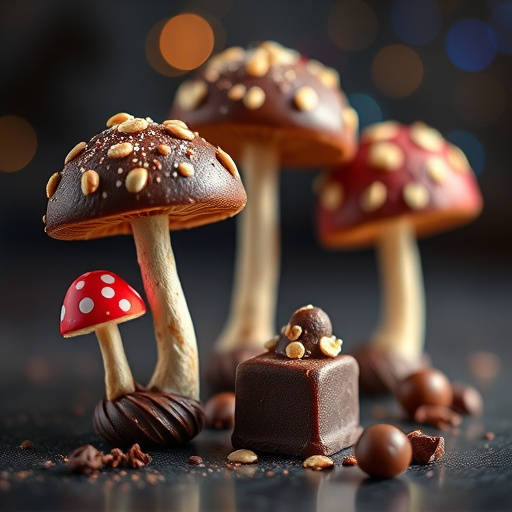
Magic mushrooms, scientifically known as Psilocybin mushrooms, contain powerful compounds that have long intrigued scientists and researchers. The key active ingredients in these fungi are psilocybin and psilocin, which are responsible for their mind-altering effects. When consumed, psilocybin is converted into psilocin in the body, leading to altered perceptions and heightened sensory experiences.
The science behind magic mushroom chocolates explores the potential benefits of incorporating these compounds into edible forms like chocolate. By infusing chocolate with psilocybin or creating treats that contain extractions from the mushrooms, consumers can experience the effects without traditional methods such as brewing a tea or preparing a tincture. This innovative approach allows for a more subtle and controlled dose, making it an intriguing option for those seeking mental focus, creativity boosts, or even therapeutic applications under professional supervision.
– Exploring psilocybin and psilocin: Their role and effects on the brain
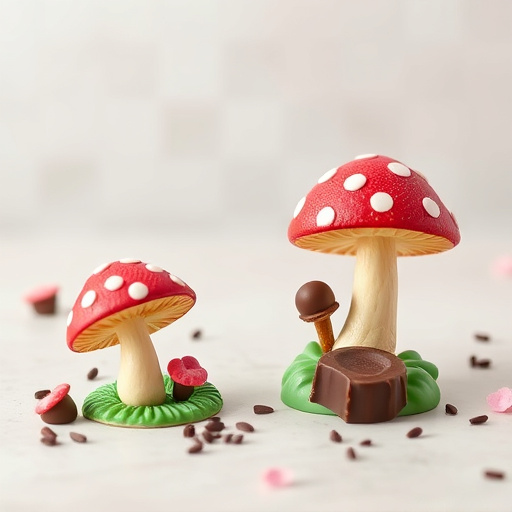
Psilocybin and psilocin, the active compounds found in magic mushrooms, have intrigued scientists and researchers for decades due to their profound effects on the human mind. These compounds are classified as serotonergic psychedelics, meaning they interact with serotonin receptors in the brain, leading to altered states of consciousness and heightened cognitive functions.
When consumed, psilocybin is converted into psilocin, which binds to specific receptors in the brain, primarily those involved in perception, mood, and higher-order cognitive processes. This interaction can result in a range of effects, including enhanced creativity, improved problem-solving abilities, and altered perceptions of time and space. The Science Behind Magic Mushroom Chocolates delves into understanding how these compounds influence neural pathways, potentially offering insights into their role in improving focus and cognitive performance.
– How these compounds interact with serotonin receptors and neural networks
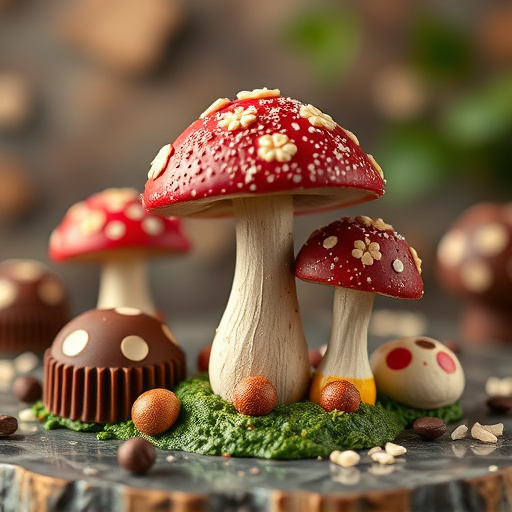
The Science Behind Magic Mushroom Chocolates
Magic mushroom chocolates, incorporating compounds like psilocybin, interact with the brain in a unique and intriguing way. These compounds are known to bind to specific serotonin receptors, particularly 5-HT2A receptors, which play a significant role in mood, perception, and consciousness. This interaction triggers the release of neurotransmitters, leading to altered states of consciousness often associated with mystical experiences.
Beyond serotonin receptors, these compounds also influence neural networks involved in cognitive functions like attention and focus. Research suggests that psilocybin can enhance connectivity between different brain regions, fostering a more integrated information processing system. This increased network coherence may contribute to the reported improvements in focus and mental clarity experienced by some users. The Science Behind Magic Mushroom Chocolates offers a glimpse into the potential therapeutic benefits of these compounds for various mental health conditions, including attention-related disorders.
The science behind magic mushroom chocolates is a fascinating exploration of psilocybin and psilocin, compounds known for their potent effects on brain activity. These natural psychedelics interact with serotonin receptors, offering potential therapeutic benefits for focus and mental health. While further research is needed, initial studies suggest that controlled ingestion through chocolate forms could provide a safe and accessible way to harness the power of magic mushrooms for improved cognitive function. By understanding the compounds at play, we can navigate this emerging field with informed curiosity.

